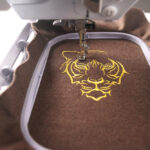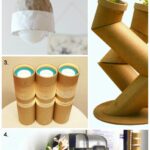I. Creative Ways to Repurpose Your Dish Detergent Container
II. Step-by-Step Guide to Upcycling: Transforming Containers into Useful Items
III. Eco-Friendly Benefits of Upcycling Household Products
Creative Ways to Repurpose Your Dish Detergent Container
Have you ever looked at your empty dish detergent container and thought, “This could be more than just trash?” If you have, you’re in good company! These sturdy, plastic containers are not just perfect for cleaning dishes; they can be transformed into a variety of useful items around the home. Let’s dive into some creative ways to repurpose your dish detergent container and give it a second life!
1. Watering Can
Your old detergent container can make a fantastic watering can. Here’s how:
- Rinse the container thoroughly to remove any soap residue.
- Use a hammer and a nail (or a drill) to poke small holes in the lid for water to flow through.
- Fill it up with water and start watering your plants!
This is especially handy for indoor plants or small garden beds and helps save those pesky plastic containers from the landfill.
2. Bird Feeder
If you’re a nature lover, consider turning your detergent container into a bird feeder. It’s super simple:
- Rinse out the container and remove the label.
- Cut openings on the sides where birds can access the food, making sure they’re at a comfortable height.
- Fill the bottom with birdseed and hang it from a tree branch using some string or wire.
Your feathered friends will thank you, and you’ll get to enjoy their visits!
3. Storage Container
Another great use for your dish detergent container is as a storage bin:
- Use it to hold small items like toys, craft supplies, or even gardening tools.
- Label it with a marker or some adhesive labels to keep everything organized.
This is an excellent way to declutter and keep things tidy at home!
4. Paint Applicator
If you’re into DIY projects, your empty container can serve as a paint applicator. Here’s how:
- Rinse the container and remove any labels.
- Fill it with paint and attach a sponge or cloth to the lid.
- Use it to dab or roll paint onto surfaces for a unique effect.
It’s an innovative way to recycle while unleashing your inner artist!
5. Funnel
Need a funnel for your kitchen tasks? Look no further than your detergent container!
- Simply cut off the top, making a wide opening.
- Use the spout to pour liquids or dry ingredients easily into jars or bottles.
This repurposed funnel will make your cooking and baking ventures so much easier!
As you can see, there’s no shortage of creativity when it comes to repurposing your dish detergent container. Not only will you find new uses for them, but you’ll also be doing your part for the environment by reducing waste. So next time you finish a bottle of dish soap, think twice before tossing it out—your future self (and the planet) will thank you!
Step-by-Step Guide to Upcycling: Transforming Containers into Useful Items
Hey there, eco-warrior! You might be wondering how to breathe new life into those empty dish detergent containers lurking under your sink. Upcycling can be a fun and creative way to reduce waste and turn something ordinary into something extraordinary. Let’s dive into a simple step-by-step guide that will help you transform those containers into useful items!
Step 1: Gather Your Materials
Before you get started, gather everything you’ll need:
- Empty dish detergent containers
- Scissors or a utility knife
- Sandpaper (if you have it)
- Paint (optional)
- Glue or tape
- Decorative items (like stickers, washi tape, or fabric)
Step 2: Clean Your Containers
First things first, give those containers a good wash! Remove any leftover detergent and rinse them thoroughly. You don’t want remnants of soap to interfere with your new creation. Let them dry completely before moving on to the next step.
Step 3: Decide on Your Project
Now comes the fun part: deciding what you want to create! Here are a few ideas to spark your imagination:
- Planter: Cut the container in half, fill it with soil, and plant your favorite herbs or flowers.
- Pencil Holder: Decorate the container and use it to organize your desk supplies.
- Bird Feeder: Cut holes on the sides, fill with birdseed, and hang it outside.
- Storage for Cleaning Supplies: Use it to store sponges, cloths, or even pet supplies.
Step 4: Make Your Cuts
Once you’ve decided what to make, it’s time to cut! Use your scissors or utility knife to create the necessary openings. Be careful when handling sharp tools, and consider wearing protective gloves if you’re feeling cautious.
Step 5: Smooth the Edges
If you’ve made any sharp cuts, take some sandpaper to smooth the edges. This will prevent any accidental cuts or scrapes while you’re handling your new creation.
Step 6: Decorate!
Let your creativity shine! Use paint, stickers, or fabric to give your project some personality. This is where you can really make it your own, so have fun with it. Consider the colors and patterns that bring you joy!
Step 7: Assemble and Use
Finally, assemble all parts of your project together, using glue or tape as needed. Once everything is set, find the perfect spot for your new item in your home. Enjoy the satisfaction of having repurposed something that would have otherwise ended up in the landfill!
Upcycling isn’t just about saving the environment; it’s also about enjoying the process and expressing yourself. So grab those empty containers, unleash your creativity, and watch your ideas come to life!
Eco-Friendly Benefits of Upcycling Household Products
Hey there! So, you’ve probably heard the term “upcycling” thrown around, but do you really know what it means? At its core, upcycling is all about taking something you already own and giving it a new life, a new purpose, and often, a new style. When it comes to household products, especially those pesky containers, upcycling isn’t just a creative endeavor; it can have some amazing eco-friendly benefits. Let’s dive into why you should consider this fantastic practice!
1. Reduces Waste
First and foremost, upcycling helps keep items out of the landfill. Did you know that a significant portion of our household waste consists of plastic containers? By transforming your old dish detergent bottles into, say, watering cans or storage containers, you’re not just clearing clutter—you’re actively reducing the amount of waste that contributes to environmental pollution. Every little bit counts!
2. Conserves Resources
Think about it: every time you buy a new product, there’s a whole process involved: extraction of raw materials, manufacturing, packaging, and transportation. This all consumes valuable resources and energy. By upcycling, you’re minimizing the demand for new products, which, in turn, conserves natural resources and reduces your carbon footprint. It’s a win-win!
3. Saves Money
Let’s face it—upcycling can save you some serious cash. Instead of heading to the store to buy new organizers, planters, or other household items, look around your home first. That old detergent bottle could be transformed into a nifty bird feeder or a stylish vase! Upcycling allows you to be creative without breaking the bank.
4. Encourages Creativity
Now, here’s where the fun really begins! Upcycling encourages you to tap into your creative side. As you brainstorm new uses for your old containers, you might discover hidden talents in crafting or DIY projects. Plus, it’s a great way to personalize your space. Imagine the satisfaction of saying, “I made that!” when guests admire your home decor.
5. Inspires Community and Sharing
When you engage in upcycling, you might just spark inspiration among your friends and family. It’s a wonderful opportunity to share ideas and projects. You could even organize a local upcycling workshop where everyone brings their unused items to create something new together. Community engagement is great not just for the planet, but for building connections as well!
6. Promotes Sustainable Habits
Lastly, upcycling encourages a mindset shift towards sustainability. Once you start thinking about what can be repurposed, you may find yourself making more eco-conscious decisions in other areas of your life. This could mean choosing to buy second-hand items, reducing consumption, or opting for more sustainable products. It’s all about fostering habits that benefit both you and the planet.
In conclusion, upcycling is much more than a trendy buzzword; it’s a powerful tool for reducing waste, conserving resources, and saving money while also inspiring creativity and community. So next time you’re about to toss out an old container, take a moment to think about how you can breathe new life into it. Happy upcycling!





Comments